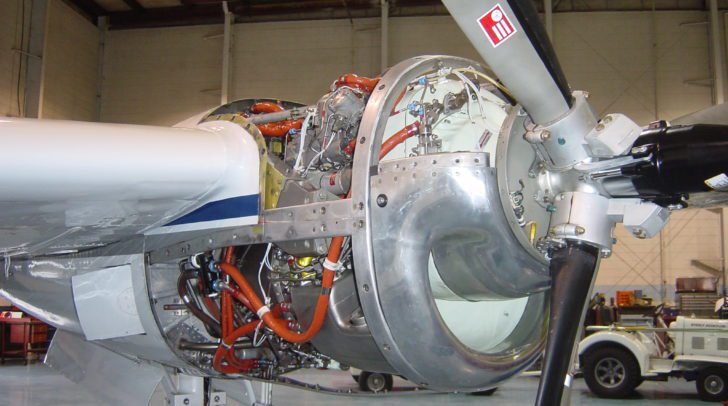
The FAA said the AD was prompted by reports that combustion chamber case assemblies have cracked and ruptured. The AD was issued “to prevent failure of the combustion chamber case assembly. The unsafe condition, if not addressed, could result in failure of the combustion chamber, in-flight shutdown, and reduced control of the airplane.”
The inspection, which can be completed in an hour or less according to the AD, involves all accessible areas of the combustion chamber case assembly, focusing on the weld joints, and must be completed before accumulating 450 hours in service since the last fuel nozzle inspection or within 50 hours in service after the February 28, 2018 effective date of this AD, whichever occurs later.
Honeywell said the AD “mainly affects the higher-pressure “flowerpot/-8+” engines, but the older P/C through -6 engines have some plenums with a lot of time on them.”
Operators who have been accomplishing published safety SBs should not have any problems with the combustion chamber cases, Honeywell noted. The company recommends that any time the plenum exterior is accessed, a quick visual be performed on all accessible weld joints. When the turbine is accessed the plenum should be updated with modified bosses, which is called for in the SB and AD.
Honeywell said its combustion chamber service bulletins are all Category 1 Safety Bulletin(s) that recommend replacing the combustion chamber (plenum) with a new improved design at the next event (either scheduled or unscheduled maintenance necessitating removal), but with a final compliance no later than March 2021. The FAA AD compliance differs from the Honeywell SB recommendations in that the AD continues the recurring visual inspections (until the plenum is replaced with new improved design), disqualifies certain old-design plenums from being reinstalled on National Flight Service STC’d engines, and requires all currently installed plenums on those engines be replaced before accumulating an additional 3700 hours following release of the AD.
Following is Honeywell’s guidance regarding the A.D.
- Confirm part number of plenum installed (the IPC allows the use of several different plenum part numbers). If the installed plenum is a P/N 869728-X, 893973-X, 3101668-X or 3102613-X then this A.D. is applicable. (Note – if installed plenum part number is listed in the engine’s applicable IPC and is NOT one of these four listed suspect part numbers, then this A.D. can be signed off as “N/A by plenum part number”).
- If the installed plenum part number is one of the four suspect plenum part numbers, operators shall then inspect the plenum per SB 72-2178 R.0 before engine accumulates 450 hours since last fuel nozzle inspection OR within 50 hours after effective date of this A.D., whichever occurs later.
- For TPE331-3U, -3UW, -5, -5A, -5AB, -5B, -6, and -6A engines found to have a P/N 869728-1, 869728-3, or 893973-5 plenum installed (one without the one-piece bleed pad; refer to A.D. for picture) or TPE331-1, -2, and -2UA engines that have been modified for STC SE383CH by National Flight Services, Inc., those plenums must be removed from service at the next removal of the plenum from the engine or within 3700 hours time-in-service since last hot-section inspection.
- For TPE331 models -8 and subsequent, you need only re-inspect the plenum at each scheduled fuel nozzle inspection (intervals of which are not to exceed 450 hours) until plenum is replaced for cause.
- The A.D. has special provisions for FAR Part 135/121 operators. They should consult with their authorized Twin Commander service center for details.
For more information contact your authorized Twin Commander service center.
